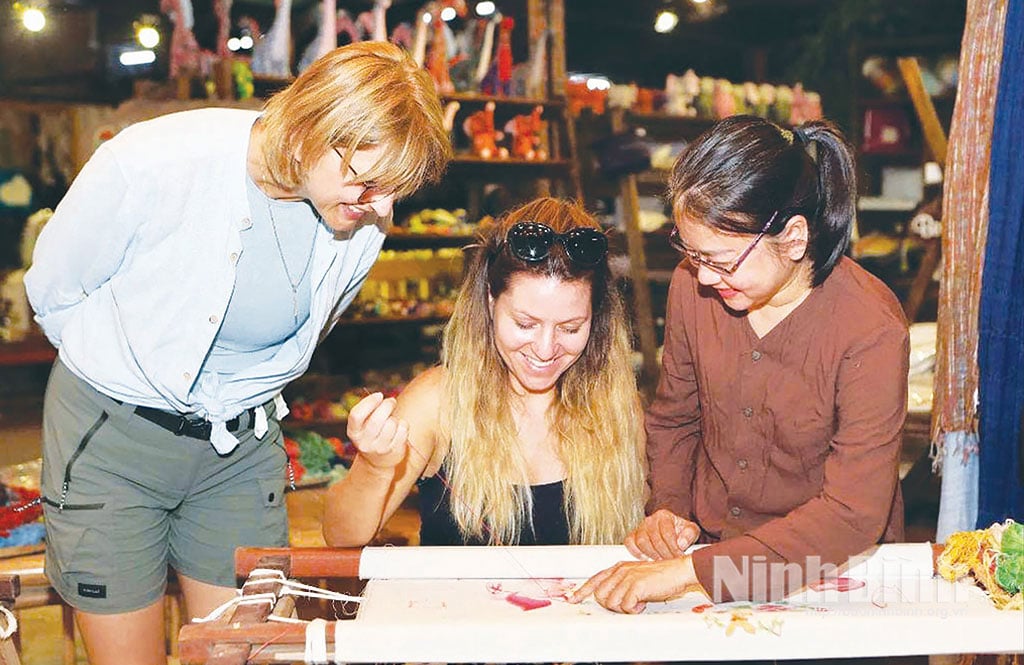
In the heart of the thousand-year-old Hoa Lu Ancient Capital, craft villages are not simply spaces for making a living but also “living museums” of royal memories, of folk beliefs, and of contemporary aesthetics. Each village is a story, each craft is a deep imprint in the historical flow of the nation.
The soul of the capital remains in every product
One summer morning, when the sunlight was still shimmering on the Trang An mountain range, I had the opportunity to return to the land that was once the first political center of Dai Co Viet. On the winding road shaded by bodhi trees leading to Van Lam village, Nam Hoa Lu ward, the clicking sound from the embroidery frames in Van Lam village seemed to evoke a world that was both old and vibrant. The people here are still diligently working on each needle and thread, diligently weaving not only patterns but also the length of history into each piece of fabric.
I was lucky to meet Mrs. Dinh Thi Nhi, the second generation descendant of the founder of the embroidery profession in Van Lam. The small house of Mrs. Nhi and her children is located in a rare deserted alley next to Dinh Cac boat dock, which people often call "the street that never sleeps". The house is very simple, the interior decoration is a series of embroidered paintings made by the mother and her children and embroidery frames displayed around the house. Although they are the descendants of the founder of the profession, Mrs. Nhi's family all work as "embroiderers". Mrs. Nhi confided: "Each person shows their love for the profession in their own way. I have no ambition to become a boss, I just want to be a good craftsman, to preserve the profession. Now, when I am old and my eyes are dim, I just hope that there will be young people willing to come to learn, willing to sit by the frame, so that we still have people to pass on. Not to become famous, but to keep the profession from disappearing. As long as the profession remains, the village remains, the memories remain, and our roots remain."
The traditional embroidery and lace craft of Van Lam land has created for the people here many valuable and good qualities and virtues such as diligence, hard work, creativity, high aesthetic taste, neatness, cleanliness, tidiness, and neatness... And this embroidery craft has also contributed to the formation of aesthetic and ethical standards in the social life of the community, in addition to the exchange, absorption, and assimilation of European culture of Vietnamese culture in general, the exchange between Eastern embroidery and lace art and Western embroidery and lace art.
According to the elderly artisans in the village, the lace embroidery craft in Van Lam village has been around for nearly a thousand years. Legend has it that during the Tran Dynasty, Mrs. Tran Thi Dung, wife of Grand Tutor Tran Thu Do, had her maids teach the villagers of Van Lam the royal lace embroidery craft. The embroidered products of that time served rituals and ceremonies in the cultural and spiritual life, especially in festivals such as the pants, shirts, and hats of the sacrificial team; umbrellas, parasols, and robes in communal houses and temples all had the contribution and creativity of the embroiderers of Van Lam village.
Artisan Vu Thanh Luan shared: Over time, the traditional embroidery craft in Van Lam has changed to suit the times. If in the past, it was colored embroidery products serving the royal court, then during the French colonial period, the embroidery craft in Van Lam changed mainly to lace and fringe embroidery products for export to Europe. This not only helped people approach Western civilization but also brought tourists from the West to Van Lam. It can be said that these factors unintentionally created the first sketches of tourism in Ninh Binh.
On the S-shaped strip of land, Ninh Binh is a land where the pottery craft appeared quite early. According to archaeological artifacts discovered at the Man Bac archaeological site, Bach Lien village (Dong Thai commune), the pottery craft developed in this area about 3,000-4,000 years ago. During the Dinh dynasty, many types of typical architectural materials made of pottery were crafted by artisans from Bo Bat craft village to serve the construction of the ancient capital of Hoa Lu.
When King Ly Thai To moved the capital to Thang Long, Bo Bat artisans followed the King and the secret of pottery to the land along the Red River (Hanoi), which later became the famous pottery village of Bat Trang. From then on, the pottery profession in the old homeland gradually faded away, and then disappeared for more than a millennium.
Young artisan Pham Van Vang, a son of Bach Lien village, has rekindled the "fire of the profession" from his passion and desire to restore the ancient Bo Bat pottery craft. From the years of diligently "learning from teachers" in Bat Trang, he returned to his hometown and started a business with the dream of re-establishing the legacy left by his ancestors. With the support of the government, this is a "transitional", "hinge" and "adjacent" land, which Dinh Tien Hoang Emperor soon realized and fully exploited these natural advantages to build a capital worthy of a centralized monarchy on the way to affirming its position. With the provincial authority on land fund and loan capital, he established Bo Bat Pottery Conservation and Development Company Limited, creating jobs for more than 20 local workers. “Making pottery is not only a way of life, but also a mission to awaken the memories of the ancient village. I always keep in mind to preserve the soul of Bo Bat pottery in every piece of soil, every pattern,” said artisan Pham Van Vang, his hands still diligently shaping the shape of the vase on the turntable.
With diligent hands and a spirit of innovation, today's young artisans both preserve traditional techniques and apply modern technology. Bo Bat pottery now has a new look: From ancient white glaze painted with Ninh Binh mountains and rivers to the 4-star OCOP standard golden lotus worship set, the village's products are not only popular domestically, but also appear in demanding markets such as: Japan, Singapore, Middle East...
Witnessing the handmade pottery making process, Ms. Nguyen Thuy Dung, a tourist from Hanoi, was moved to say: “I did not expect that the famous Bat Trang pottery craft has a long history from Bo Bat pottery, Ninh Binh. Holding in my hand a white enamel vase with a painting of Hoa Lu Capital, I feel the flow of history still alive in each product.”
The flame of the ancient craft that once died out is now shining brightly again from the hands of the children of the ancestral land. Bo Bat pottery, a part of the soul of the ancient capital Hoa Lu, is strongly reviving amid the creative flow of the new era.
From craft villages to national identity
Prof. Dr. People's Teacher Nguyen Quang Ngoc, Vice President of the Vietnam Historical Science Association, commented: Many people only see Hoa Lu as a military citadel, but do not realize that this is a land of water, trade, forest and sea exchange. Since the early 80s of the last century, Prof. Tran Quoc Vuong has pointed out that this is a "transitional", "hinge" and "adjacent" land, which Dinh Tien Hoang De soon recognized and fully exploited these natural advantages to build a capital worthy of a centralized monarchy on the way to affirming its position.
Therefore, it is no coincidence that craft villages were formed early and gathered around the center of power Hoa Lu. Because in the context of Dai Co Viet, the construction of a strong capital required not only politics and military but also economics and culture. Craft villages such as embroidery, stone carving, pottery, carpentry, etc. were the pillars serving the royal court, rituals, architecture and spiritual life of the dynasty. Each craft village was like a "functional piece" in the capital's ecosystem, not only contributing to building an autonomous economy but also affirming the independent cultural identity of the Vietnamese people.
From Van Lam embroidery, Ninh Van stone to Bo Bat pottery, each craft village is a door opening to the depth of history, beliefs and indigenous culture. In the context of Hoa Lu being the capital in the early period of independence, the organization of craft villages around the political center was not only to serve the needs of the royal court, but also a way to create an autonomous economy, elevate the national culture and affirm the national position.
Therefore, the preservation of these craft villages to this day is not simply to preserve the handicraft, but to preserve the memory of the capital, to continue the identity and to affirm the national cultural sovereignty through each generation. Preserving and developing craft villages is to preserve the “soft power” of the land that was once the heart of the nation.
(continued)
Part II: Making craft villages the material of cultural industry
Source: https://baoninhbinh.org.vn/phat-trien-cong-nghiep-van-hoa-tren-nen-tang-di-san-lang-801580.htm






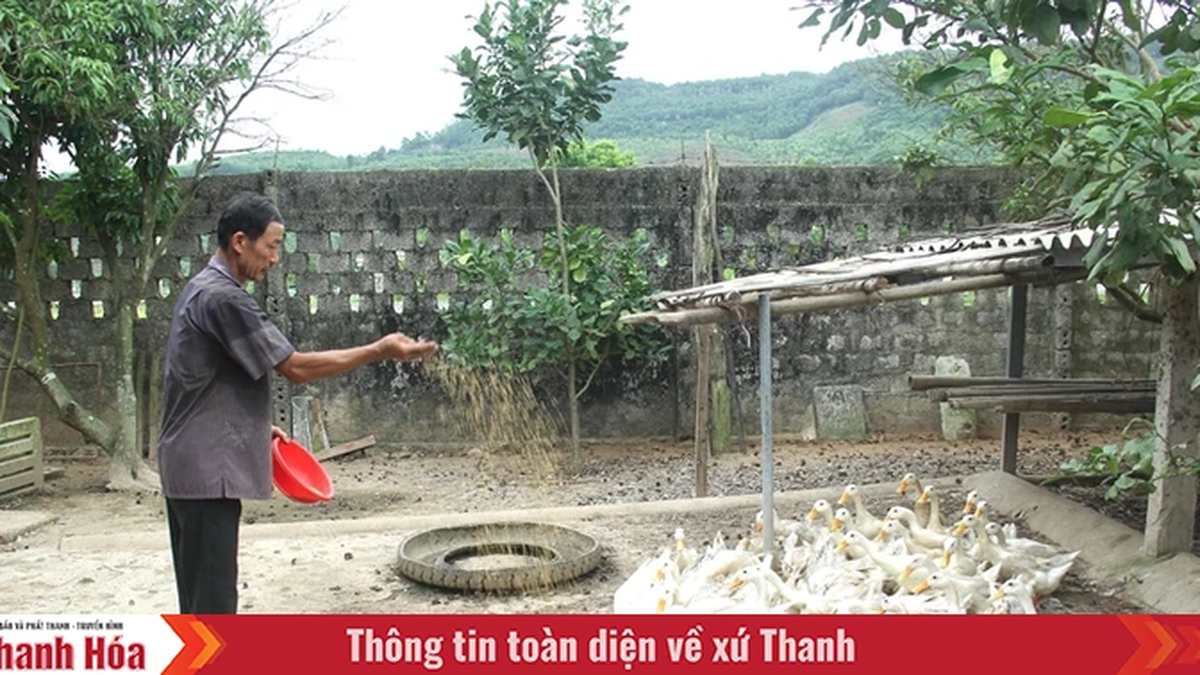



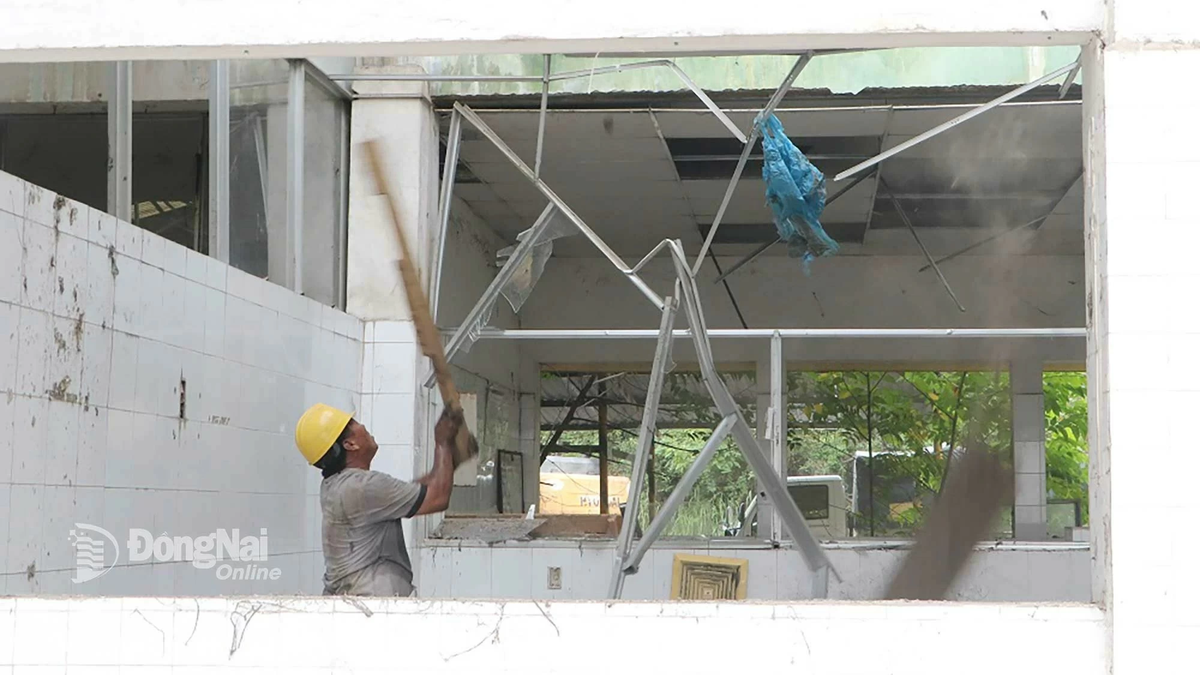
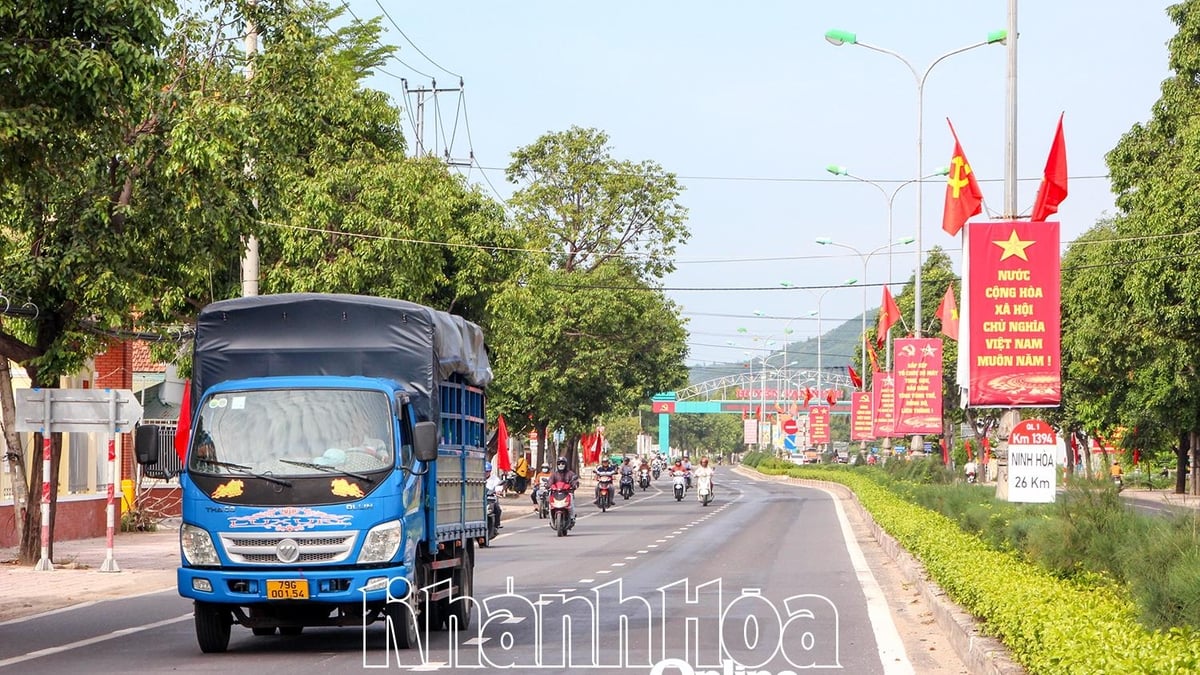











































![[Maritime News] Container shipping faces overcapacity that will last until 2028](https://vphoto.vietnam.vn/thumb/402x226/vietnam/resource/IMAGE/2025/7/30/6d35cbc6b0f643fd97f8aa2e9bc87aea)










































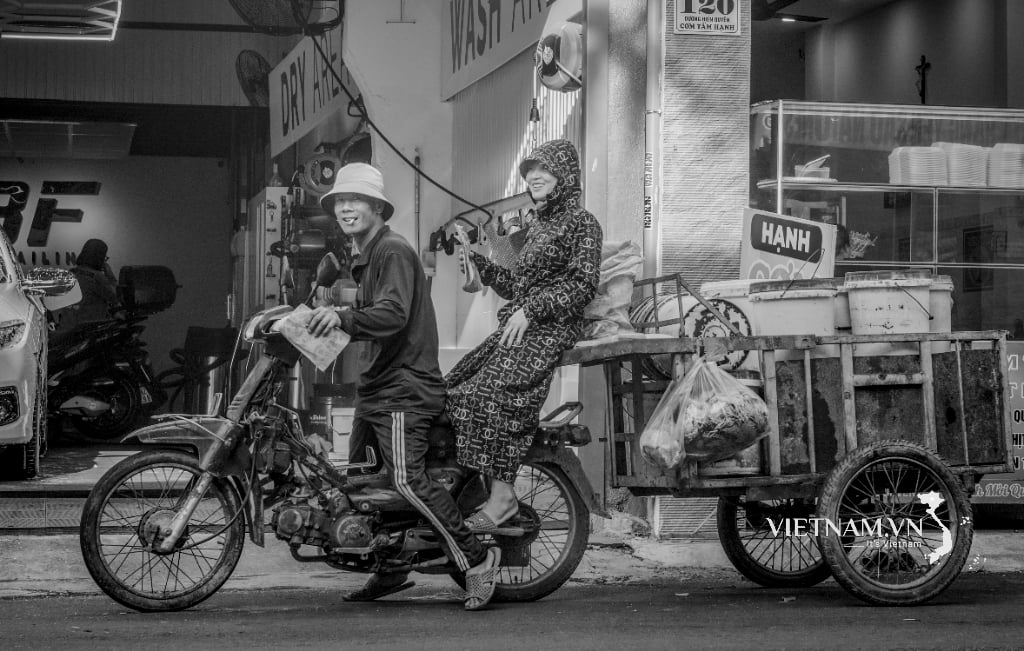
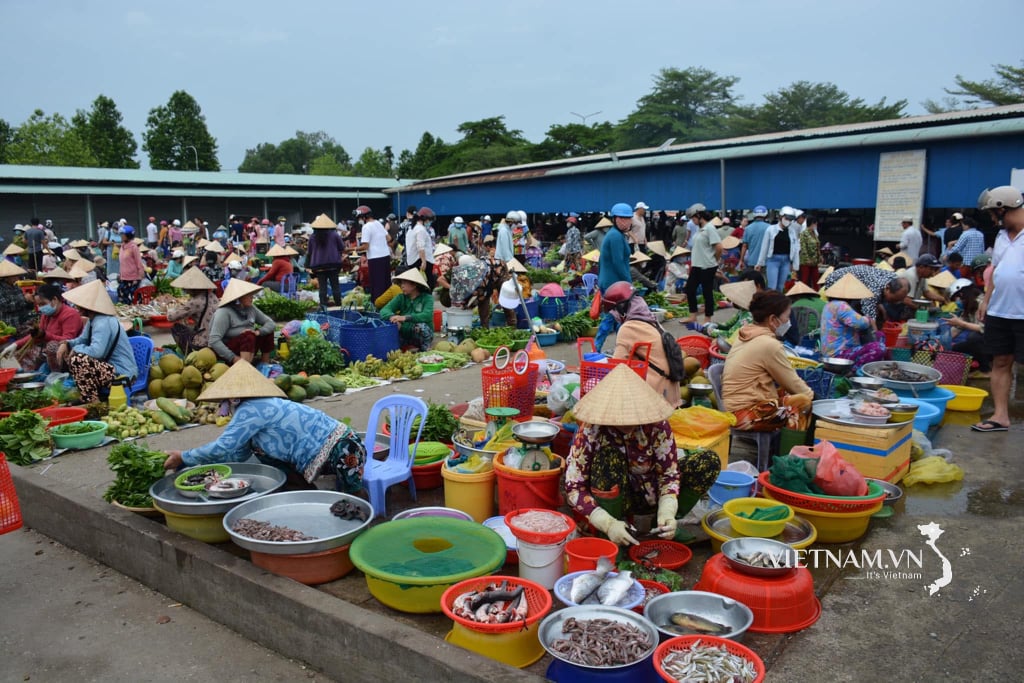

Comment (0)